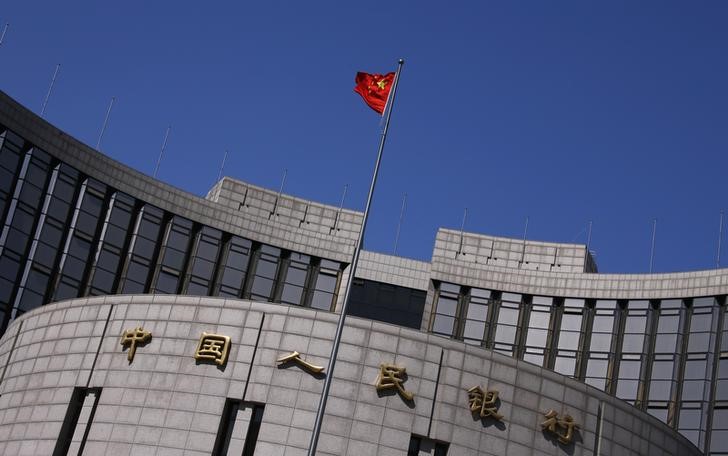By Geoffrey Smith
Investing.com -- The dollar started the week in subdued fashion after news of a Chinese interest rate cut supported risk assets.
By 3:15 AM ET (0815 GMT), the dollar index, which tracks the greenback against a basket of developed market economies, was down 0.1% at 95.10, taking its losses for the year-to-date to 0.5%. Its only notable gain was against the safe-haven yen, a day ahead of the Bank of Japan’s regular monetary policy meeting. USD/JPY rose 0.2% to 114.35.
The biggest gainers were higher-yielding commodity-linked currencies, which rose on perceptions that the move will support demand for raw materials - the Australian dollar rose 0.1% to 0.7214, while USD/CAD fell 0.2% to C$1.2523. In emerging markets, the South African rand and Turkish lira both profited from the dollar's lack of direction.
The yuan rose 0.1% to trade at 6.3491 to the dollar, still near a three-year high after the People’s Bank of China cut its one-year rate for the first time in nearly two years, by 0.1% to 2.85%.
The move came on the same day that fresh data showed the Chinese economy slowed in the fourth quarter, with a spate of Covid-19-related lockdowns and a spreading crisis in the key real estate sector both hitting output and consumption.
Chinese retail sales slowed sharply in December, although industrial production and fixed asset investment held up slightly better than expected.
Further lockdowns this year, coupled with signs of easing inflation, have raised expectations of further policy easing by the PBoC, a sharp contrast with much of the rest of the world, where central banks are scrambing to rein in inflation.
Short-term interest rate futures in Europe imply that even the European Central Bank will be forced to raise its key rate before the year-end, despite strenuous signalling to the contrary from the bank’s top management.
In Europe, the euro and sterling have failed to build on the two-month highs that they hit last week, and started the week largely adrift. The euro was up 0.1% at $1.1425, while the pound was up 0.1% at $1.3682, still untroubled by reports suggesting that Prime Minister Boris Johnson may be forced out of office for presiding over repeated breaches of Covid regulations by both himself and his staff.
Elsewhere, the Russian ruble was flat, but still under pressure from tensions surrounding Ukraine. Talks broke down late last week over Russian demands for guarantees that Ukraine will never join NATO, and Russia's foreign minister warned over the weekend that it "will not wait forever." The ruble, which usually strengthens when oil prices are as strong as they are currently, traded at 76.20 to the dollar.
